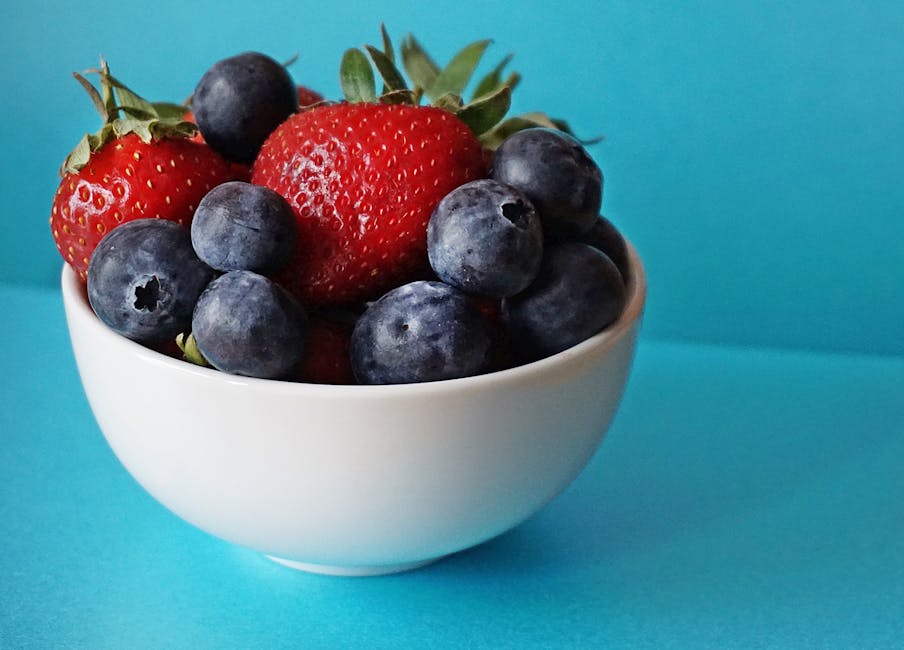The Ultimate Guide to Smart Nutrition for Optimal Health & Fitness
Smart nutrition is the cornerstone of a healthy, energetic, and fulfilling life. At Fit Food Wisdom, we believe that understanding and practicing smart nutrition is the key to achieving optimal health and fitness. In this comprehensive guide, you’ll discover how to nourish your body, boost your energy, and create lasting wellness through informed food choices and sustainable habits.
What Is Smart Nutrition?

Photo by Jan Van Bizar on Pexels
Smart nutrition is more than just counting calories or following the latest diet trends. It’s a holistic approach that focuses on providing your body with the nutrients it needs to function at its best. This means choosing foods that are rich in vitamins, minerals, fiber, healthy fats, and lean proteins while minimizing processed foods and empty calories. Smart nutrition empowers you to make informed choices that support your long-term health and fitness goals, regardless of age or activity level.
By prioritizing nutrient-dense foods, you give your body the fuel it needs to perform daily tasks, recover from exercise, and maintain a strong immune system. Smart nutrition also involves understanding your body’s unique needs and learning how different foods affect your energy, mood, and overall well-being. This knowledge allows you to create a personalized eating plan that aligns with your lifestyle and preferences, making healthy choices easier and more enjoyable.
The Foundations of a Balanced Diet

Photo by Muhammad Rayhan Haripriatna on Pexels
A balanced diet is the foundation of smart nutrition. It ensures your body receives all the essential nutrients it needs to thrive. The key components of a balanced diet include:
- Carbohydrates: The primary source of energy for your body. Opt for whole grains, fruits, and vegetables over refined sugars and white flour products.
- Proteins: Essential for muscle repair, immune function, and hormone production. Choose lean meats, poultry, fish, eggs, legumes, nuts, and seeds.
- Fats: Necessary for brain health, hormone balance, and energy. Focus on healthy fats from sources like avocados, olive oil, nuts, and fatty fish.
- Vitamins & Minerals: Crucial for countless bodily functions. Eat a variety of colorful fruits and vegetables to cover your micronutrient needs.
- Fiber: Supports digestive health and helps regulate blood sugar. Beans, whole grains, fruits, and vegetables are excellent sources.
- Water: Vital for every cell and process in your body. Aim for at least eight glasses a day, more if you’re active.
Balancing these nutrients in your meals helps stabilize energy levels, supports metabolism, and reduces the risk of chronic diseases. Remember, there’s no one-size-fits-all approach—listening to your body and adjusting your intake based on activity, age, and health status is essential.
How to Read Nutrition Labels and Make Informed Choices

Photo by SHVETS production on Pexels
Understanding nutrition labels is a powerful tool for smart nutrition. Labels provide insight into what’s in your food, helping you make healthier choices at the grocery store. Here’s how to decode the essentials:
- Serving Size: Always check this first. All nutritional information is based on one serving, which may differ from the package size.
- Calories: Consider your daily needs and activity level when evaluating calorie content.
- Macronutrients: Look at grams of carbohydrates, proteins, and fats. Pay attention to the types of fat (saturated, unsaturated, trans) and choose options low in saturated and trans fats.
- Sugars: Limit added sugars. Natural sugars from fruit are preferable to added sugars found in processed foods.
- Sodium: High sodium intake is linked to hypertension. Choose products with lower sodium content.
- Ingredients List: The shorter and more recognizable the list, the better. Avoid foods with artificial additives, preservatives, and excessive added sugars.
By mastering nutrition labels, you can confidently select foods that align with your health goals and avoid hidden pitfalls in packaged products.
Meal Planning for Success

Photo by KATRIN BOLOVTSOVA on Pexels
Meal planning is a practical strategy that supports smart nutrition by making healthy eating more convenient and less stressful. Planning your meals in advance helps you:
- Ensure balanced nutrition throughout the week
- Save time and reduce last-minute unhealthy choices
- Control portion sizes and manage calorie intake
- Minimize food waste and save money
Start by setting aside time each week to plan your meals and snacks. Choose a variety of recipes that incorporate whole grains, lean proteins, healthy fats, and plenty of fruits and vegetables. Prepare a shopping list and stick to it to avoid impulse purchases. Batch cooking and prepping ingredients in advance can make weekday meals quick and easy.
Remember, flexibility is key. Life happens, and sometimes plans change. Having healthy staples on hand, like canned beans, frozen vegetables, and whole grains, ensures you can always whip up a nutritious meal, even on busy days.
Mindful Eating: Building a Healthy Relationship with Food

Photo by Artem Podrez on Pexels
Mindful eating is an essential part of smart nutrition. It involves paying attention to your body’s hunger and fullness cues, savoring each bite, and eating with intention rather than out of habit or emotion. Practicing mindful eating can help you:
- Recognize true hunger versus emotional cravings
- Enjoy your meals more and feel satisfied with less food
- Reduce overeating and unhealthy snacking
- Develop a more positive relationship with food
To eat mindfully, minimize distractions during meals—turn off screens and focus on the flavors, textures, and aromas of your food. Chew slowly and pause between bites. Check in with your body throughout the meal to assess your hunger and fullness levels. Over time, mindful eating can help you make healthier choices naturally and foster a sense of gratitude for the nourishment food provides.
Smart Nutrition for Fitness and Active Lifestyles

Photo by Suzy Hazelwood on Pexels
Physical activity increases your body’s nutritional needs. Smart nutrition for fitness focuses on fueling workouts, enhancing recovery, and supporting muscle growth. Key strategies include:
- Pre-Workout Nutrition: Eat a balanced meal with complex carbs and lean protein 1-3 hours before exercise to provide sustained energy.
- Hydration: Drink water before, during, and after workouts to replace fluids lost through sweat.
- Post-Workout Recovery: Refuel within 30-60 minutes after exercise with a combination of protein and carbohydrates to aid muscle repair and replenish glycogen stores.
- Micronutrients: Active individuals may need more vitamins and minerals, especially B vitamins, iron, calcium, and magnesium. Focus on a varied diet rich in whole foods.
Supplementation can be helpful for some, but whole foods should be your primary source of nutrients. Consult a healthcare professional before adding supplements to your routine, especially if you have specific health concerns or dietary restrictions.
Overcoming Common Nutrition Myths

Photo by Olga Lioncat on Pexels
The world of nutrition is full of conflicting advice and persistent myths. Smart nutrition is about separating fact from fiction. Here are some common myths debunked:
- Myth: Carbs are bad for you.
Fact: Carbohydrates are essential for energy. Choose whole, unprocessed sources like oats, quinoa, and sweet potatoes. - Myth: Eating fat makes you fat.
Fact: Healthy fats support brain function, hormone balance, and satiety. Focus on unsaturated fats and limit trans fats. - Myth: You need to detox with special diets or juices.
Fact: Your liver and kidneys naturally detoxify your body. A balanced diet with plenty of water is all you need. - Myth: High-protein diets are harmful.
Fact: For most healthy individuals, higher protein intake supports muscle maintenance and can aid weight management.
Stay informed by seeking advice from qualified nutrition professionals and relying on evidence-based resources. Avoid fad diets that promise quick fixes and focus on sustainable, long-term habits.
Creating Sustainable Healthy Habits

Photo by cottonbro studio on Pexels
Lasting change comes from building habits that fit your lifestyle. Smart nutrition is most effective when it becomes a natural part of your daily routine. Here’s how to make healthy eating stick:
- Set realistic, specific goals (e.g., add one serving of vegetables to lunch daily)
- Track your progress with a food journal or app
- Celebrate small wins and be patient with setbacks
- Surround yourself with supportive people who share your values
- Stay curious—experiment with new recipes, flavors, and cuisines
Remember, perfection isn’t the goal—consistency is. Focus on progress over time, and don’t be discouraged by occasional indulgences. Every healthy choice moves you closer to optimal health and fitness.
Conclusion: Empower Your Wellness Journey with Smart Nutrition

Photo by Hameen Reynolds on Pexels
Smart nutrition is your most powerful tool for achieving and maintaining optimal health and fitness. By understanding the basics of balanced eating, making informed food choices, practicing mindful habits, and embracing sustainability, you can transform your relationship with food and unlock your full potential. At Fit Food Wisdom, our mission is to guide you on this journey with practical, evidence-based advice that empowers you to thrive. Start today—your healthiest, happiest self awaits!
Sources
- https://www.heymarvelous.com/blog/seo-for-wellness-blog
- https://www.brandsetgrow.com/blog/seo-tips-health-wellness-fitness-brands
- https://roiminds.com/health-and-wellness-blog-for-seo/
- https://www.gethealthie.com/blog/seo-for-medical-practices
- https://www.getweave.com/seo-strategies-wellness/

